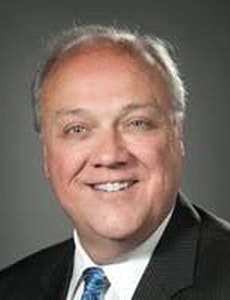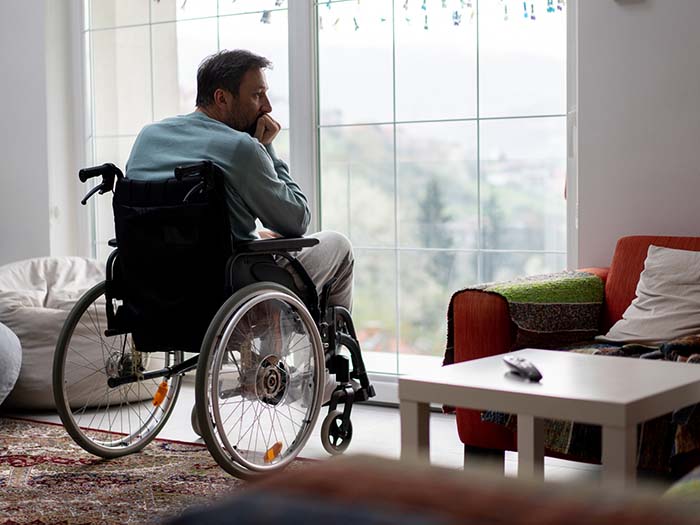Creative Training Strategies Cut Lost Days by a Third for This Health System
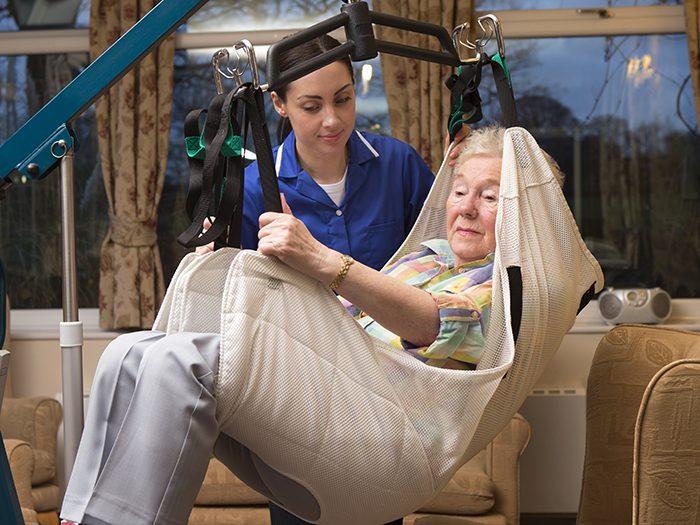
A cultural turnaround centered on employee advocacy enabled Northwell Health to change the trend of its workers’ comp exposures, decreasing the organization’s expected long-term liabilities by $10 million.
It also earned the health system a 2018 Teddy Award Honorable Mention.
Joseph Molloy, vice president, workforce safety, was brought on board in 2014 to restructure Northwell’s workers’ comp approach, as costs and potential liabilities were piling up. Worse, the health system was failing to provide the services and benefits expected by stakeholders.
The program structure Molloy walked into was characterized by an old-school, adversarial view of the relationship between the company and its employees.
The situation was compounded by a lack of transparency and an overall disconnect between the several departments involved — a real issue for an organization that encompasses 23 hospitals and employs 66,000 people, and whose workers’ comp budget impact was projected to reach nearly $100 million in 2019, had no action been taken.
“There was a lot of mistrust, both on the employee’s and the employer’s side,” Molloy recalled.
He set out to promote a comprehensive turnaround with the creation of the Workforce Safety (WFS) department, which brought together resources from across the organization including employee benefits, managed care, insurance and risk management.
“You deal with people who want to take advantage of the system aggressively, but in a completely separate way. The vast majority of claims are real and legitimate, and the department must focus on taking care of those people.” — Joseph Molloy, vice president, workforce safety, Northwell Health
Building the new team created an environment where the specific subject matter experts can cultivate their ideas together to generate better solutions. It brings Northwell’s safety, prevention, safe patient handling and workers’ compensation programs into a fully functioning and integrated state.
The team was urged to look at workers’ comp with a different lens, in particular by placing employee advocacy squarely at the top of its priority list.
“We really do not want employees to get injured, and when they do get injured, we have a very strong obligation to make sure that we do everything we can to return them to their pre-injury life,” Molloy said.
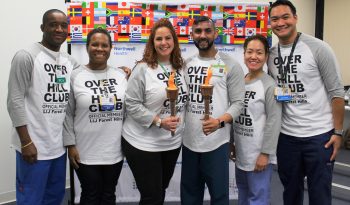
Northwell Health employees participating in the health system’s annual Safe Patient Handling Olympics.
“We gave adjusters and RN case managers the ability to approve treatments that might be outside of the guidelines. We told employees that we were not going to make them jump through hoops, we were not going to make them [endure] lots of different examinations to get approval for new therapy visits. And similarly, we were not going to nickel and dime the doctors either.”
To firm up the new approach, Molloy and his team, which is 33-people strong, built up an ambitious 800-item project plan, which included an overhauled transitional return to work program as well as an automated self-service incident reporting system that’s mobile enabled. WFS set a goal of completing the plan within two years, most of it was accomplished in a whirlwind eight months.
Patient Handling a Top Priority
Among the items on the list are the pieces of a multi-layered and innovative approach to one of the top concerns of every health system: safe patient handling.
Northwell developed a vigorous safe patient handling training program. In 2017, WFS trained almost 20,000 employees across the organization. As massive a task as that sounds, it’s even tougher when you consider that classroom space may not be available at ambulatory locations, and getting access to unoccupied rooms in hospitals can be hit or miss.
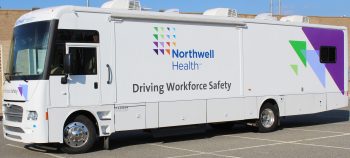
Northwell Health employs a mobile unit that simulates a hospital room in order to provide safe patient handling training to remote or inaccessible locations.
That’s why WFS took the innovative step of creating a safe patient handling mobile training unit — the only unit of its kind in the country. Inside is a mock hospital room, complete with a hospital bed and lifting equipment.
Reinforcing the training, the health system established its first annual Safe Patient Handling Olympics, including 20 teams from different hospitals. Outside experts timed and scored the teams on their ability to assess and execute a series of lifts and patient moving activities.
Since the SPH program’s inception in 2016, patient-handling-related Indemnity claims dropped by 30.7 percent and lost days are down 35.3 percent.
More Work to Be Done
There’s plenty of work still ahead for Northwell Health. Molloy points out, for instance, that the work of communicating the message is an ongoing task that can be frustrating at times.
“There are going to be situations where, no matter how much you communicate, someone will tell you that they did not report an injury because they did not know to whom it should have been reported,” he said.
“We have distributed 20,000 mouse pads to managers, supervisors and employees, saying, ‘This is how you report a workplace injury’. We have hung posters all around, we have put the message in screensavers, we have sent blast emails with it. So there are going to be moments where you ask yourself when people will get it. But you have to stay the course.”
The adoption of a more progressive line on workers’ comp was once thought to be at odds with protecting the bottom line. But for Northwell, it has enabled them to provide better services to employees while simultaneously reduced workers’ compensation exposures.
For those still concerned that an advocacy model could breed abuse or fraud, Molloy reiterates that fairness and trust are key to a successful workers’ compensation strategy, even if fraudulent claims occasionally do need to be dealt with.
“You build the program for the employees who get legitimately injured and want to go through treatment so that they can get back to work as soon as possible,” Molloy said.
“You deal with people who want to take advantage of the system aggressively, but in a completely separate way. The vast majority of claims are real and legitimate, and the department must focus on taking care of those people.” &

